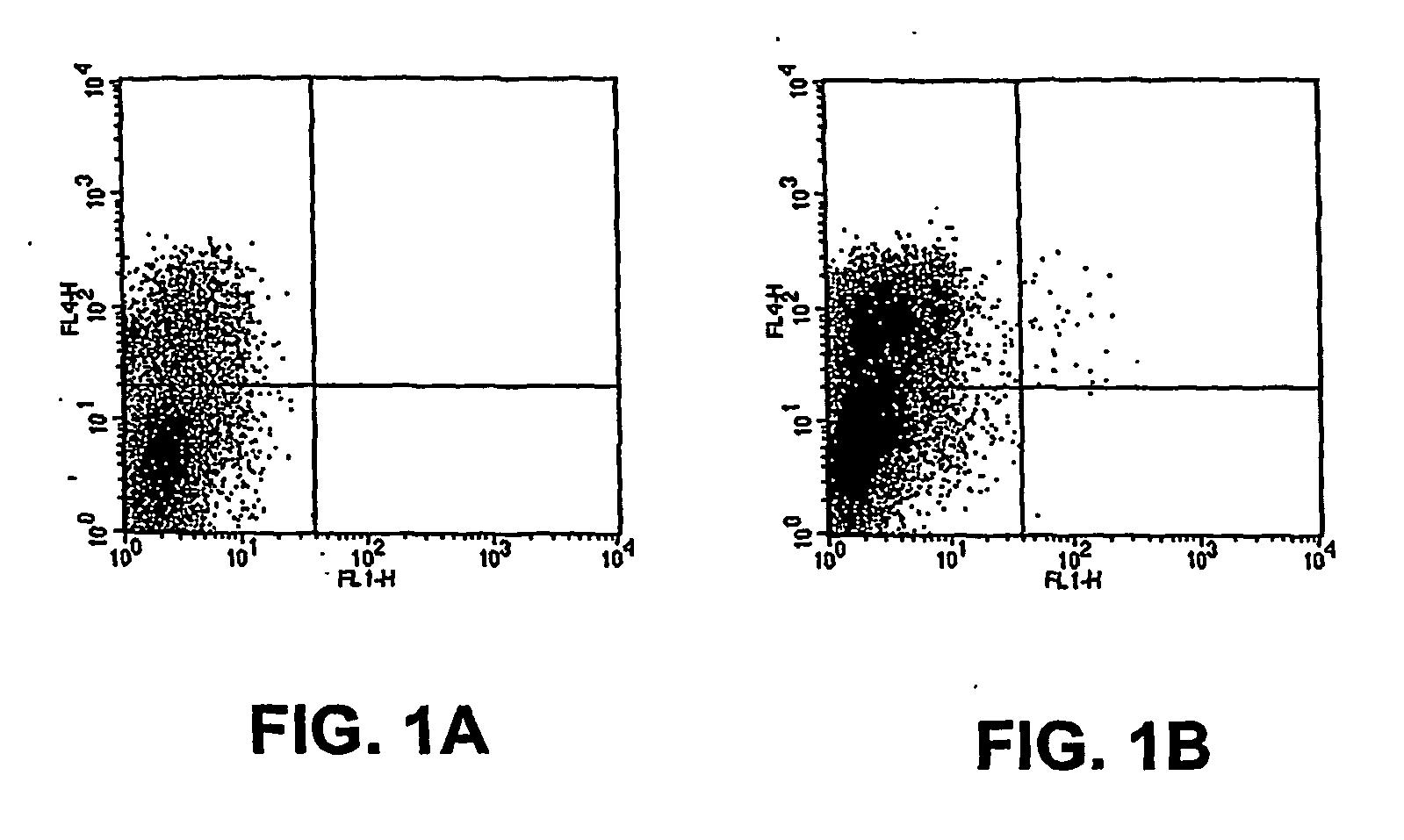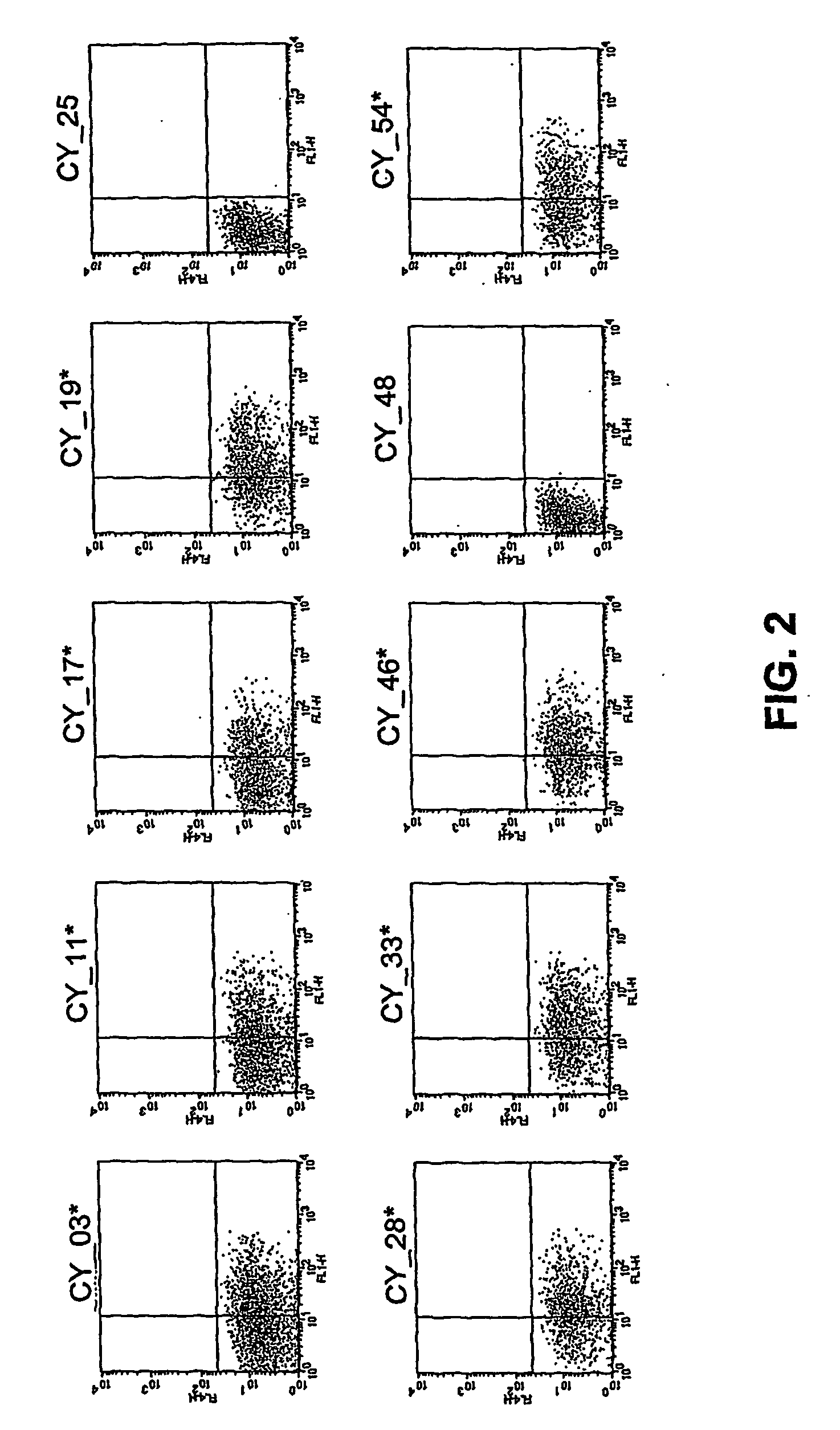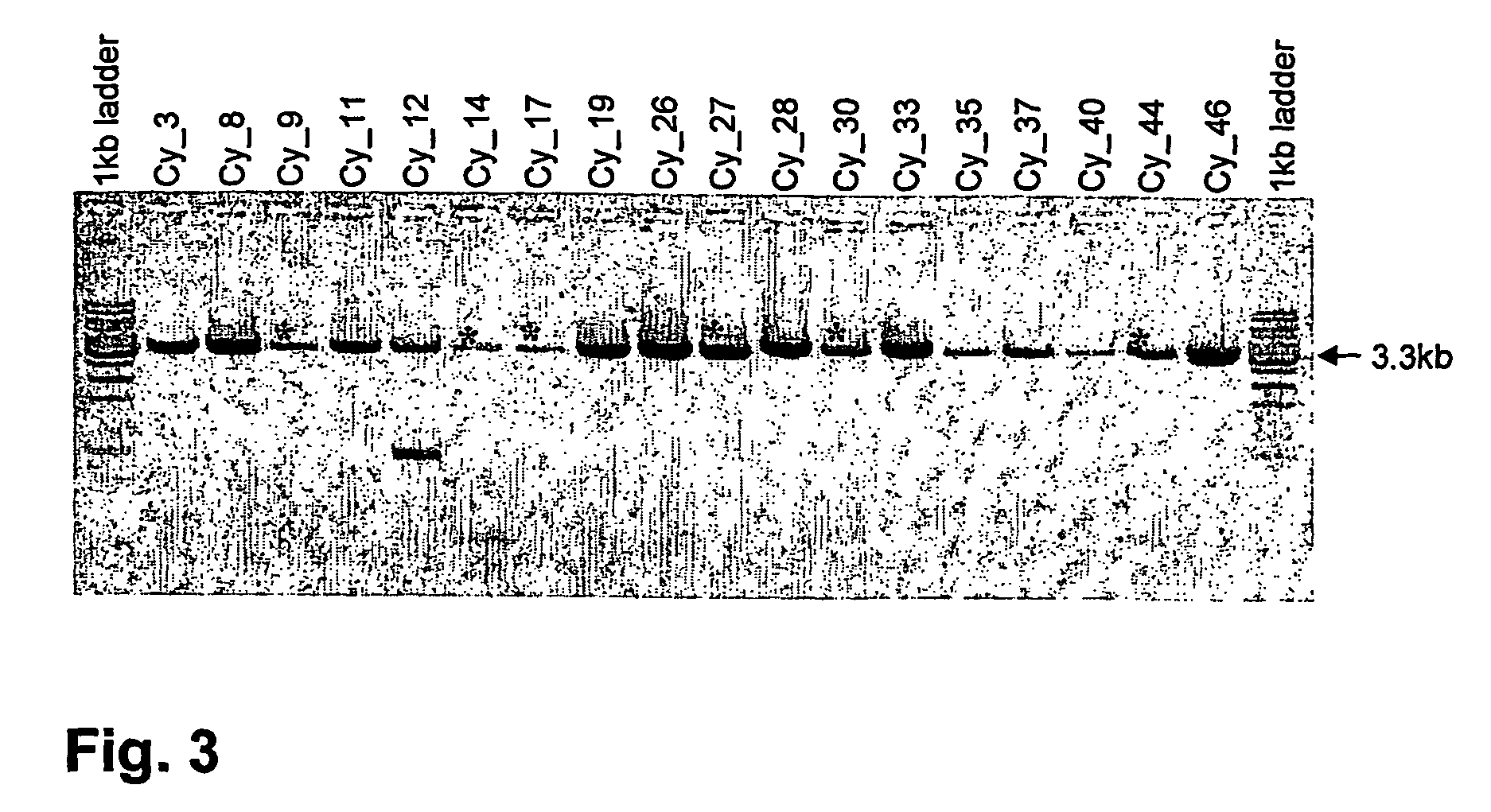Modified polypeptides for targeting cell-entry of the adenoviruses of subtype b
a technology of adenoviruses and polypeptides, applied in the field of non-enveloped dna viruses, can solve the problems of many tumor types being poorly infected by ad5
- Summary
- Abstract
- Description
- Claims
- Application Information
AI Technical Summary
Benefits of technology
Problems solved by technology
Method used
Image
Examples
example 1
[0088] Construction of a normalized alphaviral cDNA expression library containing the Ad3 receptor
[0089] PolyA+ RNA was isolated from the K562 human myelogenous leukaemia cell line with the FastTrack™ mRNA isolation kit (Invitrogen). Single-stranded cDNA was produced from 2 μg polyA+ RNA with PowerScript™ reverse transcriptase (Clontech) using the template switch protocol (Zhu et al., 2001), with the 3′-Sfi oligonucleotide (5′-AAG CAG TGG TAT CAA CGC AGA GTG GCC GAG GCG GCC TTT TTT TTT TTT TTT TTT TTT TTT TTT TTT VN-3′) as primer, and the 5′-Sfi oligonucleotide (5′-d[AAG CAG TGG TAT CAA CGC AGA GTG GCC ATT ACG GCC] r[GGG]-3′) as switch template.
[0090] The first strand cDNA was prepared for use as tester in the normalization procedure as follows. First, the reaction was extracted with phenol-chloroform and ethanol precipitated twice in the presence of 2M ammonium acetate. Then, the resulting pellet was resuspended in 0.5M NaOH and incubated at 55° C. for 15 minutes to degrade the R...
example 2
[0094] Identification of Ad3 receptor expressing cells by fluorescence-activated cell sorting Subconfluent (80%) baby hamster kidney (BHK) cells, which do not express a receptor for adenovims subtype B and can, by themselves, not be bound and infected by these adenoviruses, were infected with the normalized K562 viral library (the Sindbis virus based cDNA expression library of Example 1) at a multiplicity of infection (MOI) of 0.1. 107 cells were infected with each sublibrary. After 2 hours, cells were washed once and incubated for another 6 hours in the presence of a neutralizing mouse anti-Sindbis antiserum to avoid superinfection. 8 hours post-infection cells were detached with cell dissociation buffer (PBS-EDTA, Gibco BRL), washed and stained for 30 min with Alexa 488 nm-labeled Adenovirus Ad3 (diluted 1:10) and Cy5-labelled anti-mouse Ig (diluted 1:400). Cell pools were then filtered and stained with propidium iodide (PI) to exclude dead cells. Single cell sorting was performed...
example 3
[0096] Rescue of cDNA encoding the Ad3 receptor, CD46
[0097] To obtain the cDNA encoding a putative Ad3 receptor, a RT-PCR was performed using 8 supernatants, each containing monoclonal recombinant sindbis virus.
[0098] For the viral RNA isolation 140 μl of viral supernatant and OIAmp Viral RNA Kit (Qiagen, Cat No.: 52409) was used. The procedure was performed according to manufacturer's protocol and the RNA was dissolved in 30 μl DEPC-H2O.
[0099] For the cDNA synthesis 9 μl of the viral RNA were used in a reaction. The 1st strand cDNA was synthesized in a reaction containing 50 mM Tris-HCl, pH 8.3, 75 mM KCl, 3 mM MgC12, 10 mM dithiothreitol, 500 μM dATP, dCTP, dGTP, dTTP, 2 pmol LPP2 primer (5′- ACA AAT TGG ACT AAT CGA TGG C-3′), 40 Units RNaseOUT (Invitrogen Life Technologies, Cat. No. 10777-019), and 200 Units SUPERSCRIPT™ II RNase H- reverse transcriptase (Invitrogen Life Technologies, Cat. No. 18064-022) in a total volume of 20 μl at 42° C. for 1 hour. Following the reverse tr...
PUM
| Property | Measurement | Unit |
|---|---|---|
| dissociation constant | aaaaa | aaaaa |
| dissociation constant | aaaaa | aaaaa |
| dissociation constant | aaaaa | aaaaa |
Abstract
Description
Claims
Application Information
 Login to View More
Login to View More - R&D
- Intellectual Property
- Life Sciences
- Materials
- Tech Scout
- Unparalleled Data Quality
- Higher Quality Content
- 60% Fewer Hallucinations
Browse by: Latest US Patents, China's latest patents, Technical Efficacy Thesaurus, Application Domain, Technology Topic, Popular Technical Reports.
© 2025 PatSnap. All rights reserved.Legal|Privacy policy|Modern Slavery Act Transparency Statement|Sitemap|About US| Contact US: help@patsnap.com



